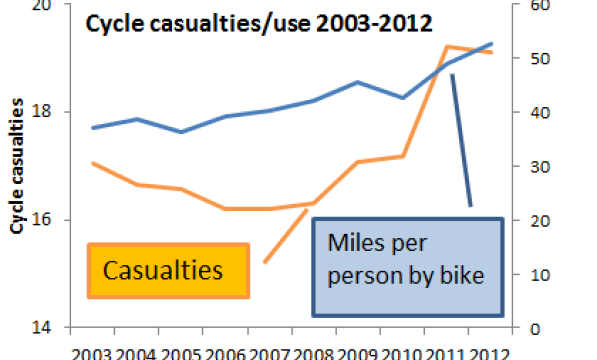Injuries to cyclists 12% higher than similar period last year

Four times a year the Department for Transport publish the figures that estimate the previous quarter's casualty figures.
Figures for spring 2013 have just been released and show a 12% increase in cycle casualties against the previous year's estimate.
Since cycle use - by at least one count - is growing substantially, it is inevitable that even if the overall risk of cycling falls, cycle casualties will still rise.
However, whereas motor traffic data is supplied for each quarter, cycle traffic changes quarter on quarter are not reported, as they are highly seasonal. For instance April and June 2012 had rainfall levels 76% and 103% above the long term average, whereas in 2013 they were 12% and 37% below respectively. The better weather during this period is almost undoubtedly linked to relatively higher cycling levels, and correspondingly higher casualty figures.
CTC has called on the Government to improve recording of cycling data to ensure that we have a better understanding of how many injuries are happening per person, or per mile travelled, not just counting the crashes.
Chris Peck
CTC Policy Coordinator
None of this should lead to complacency on behalf of Government and local authorities: far too many cycle casualties are the result of poorly designed infrastructure, high speed limits and inadequately enforced road traffic law.
If we are to achieve Get Britain Cycling's targets of 10% of trips by bike by 2025 and 25% by 2050, we will need an infrastructure which supports a far wider range of people cycling than presently, and we'll also need to put an end to bad driving by having better enforced road traffic law.

